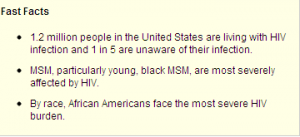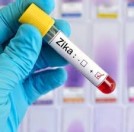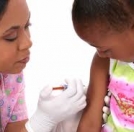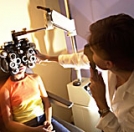Act Against AIDS: Get an HIV Testing
Today is World AIDS Day. After three decades, are we making any progress eradicating HIV/AIDS?
Combating HIV has obviously been one of the greatest challenges for science and finding cure or the vaccine that will truly eradicate it remains elusive. But now, we have the means, the medicines and other tools to ensure that we can stop the spread of HIV, the virus responsible for AIDS. Convincing evidence collected over the decade is finally showing us that an AIDS-free generation is almost at hand. Finally, the goal of eradicating the spread of disease is within reach. Key trials have confirmed that the combination drug treatment makes people with HIV less infectious.
The National Institutes of Health reported that research have found that people infected with HIV being treated with antiretroviral drugs in combination with safer behaviors are much less likely to infect others. The recent scientific evidence has shown that “treating people with HIV (is) 96% effective in reducing transmission,” says Joel Gallant of Johns Hopkins University, vice-chair of the HIV Medicine Association. Furthermore, the new research indicates “that three key interventions – prevention of mother-to-child transmission, voluntary medical male circumcision, and antiretroviral treatment as prevention– employed in combination may, for the first time, provide a plausible path to break the cycle of new HIV infections.”
Evidence-based combination prevention interventions
Prevention of mother-to-child transmission: CDC together with other agencies like President’s Emergency Plan for AIDS Relief (PEPFAR) tested pregnant women for HIV and treated those identified as HIV-positive and thus prevented 114,000 babies from being born with HIV in 2010.
Voluntary medical male circumcision: This low-cost procedure reduces the risk of female-to-male transmission by about 60%.
Treatment as prevention: The research has confirmed that early initiation of antiretroviral treatment for HIV-positive people led to 96% reduction in HIV transmission to the uninfected partner. Key words here are early treatment so it is necessary that people are tested and if found positive should be treated in order that we can drive down the rate of infection.
Having realized these key interventions as critical in the overall campaign against HIV/AIDS, the CDC and other PEPFAR partners are scaling up emphasis on all three, especially in keeping patients in treatment because stopping can create resistance to drug. Keeping them under treatment and helping them stay that course is not only beneficial to the patient but to society since they would not be infectious to others too.
Regrettably, the major concern these days is the fact that we have become complacent. The sense of crisis over AIDS has diminished after a 30-year battle with it. Despite the fact that AIDS claims 8,000 lives a day around the world, many people think of it as over and done with. Many think that it is no longer a major issue or as big a concern as cancer or obesity. HIV/AIDS is still a major concern but according to a recent survey by Kaiser Family Foundation it found “declining sense of national urgency and visibility of HIV/AIDS.” Among national health concerns, it came seventh after cancer, obesity, the uninsured, heart disease, health care costs and diabetes.
In fact records show that 1 in 5 U.S. adults do not know they have HIV because people can be infected with the AIDS virus without developing symptoms. Of the 1.2 Americans infected with HIV only 28% are being treated effectively. It becomes clear to us that though we now have the tools to stop HIV in an individual and the spread in the community, getting tested first and taking the treatment is crucial. No matter how we scale up the treatment, if those who need it don’t know they need the treatment, how can we achieve our goal of an AIDS-free generation?
In order that we can do our part in our community, find the nearest clinic and have the medical personnel in nurses uniforms get you tested for HIV. It is better to know and get the antiretroviral treatment that would suppress the virus and reduce the spread of HIV than not knowing and create more HIV cases. Let us remember that we can only prevent it from progressing to AIDS and from developing the many complications of HIV, we can only suppress so it doesn’t replicate itself and preventing it from causing damage to our immune system but AIDS remains to be an incurable infection.
Related Articles:
Obama raises U.S. goal on fighting AIDS
Obama To Announce New Treatment Targets At Forum By ONE And (RED)
World AIDS Day: What does the future hold?











